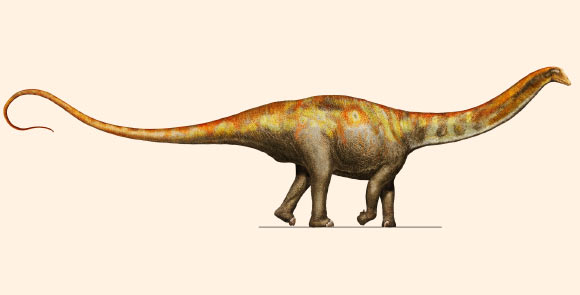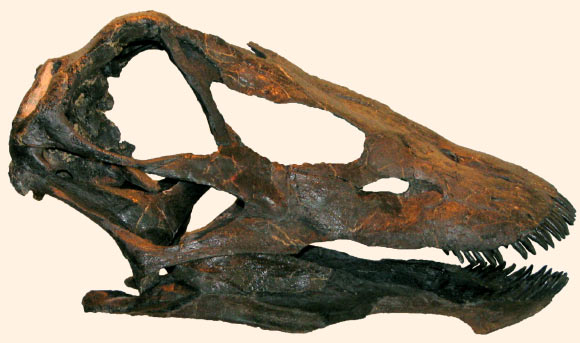A new species of sauropod dinosaur that lived about 152 million years ago (Jurassic period) has been identified from fossils found in Wyoming.

Galeamopus pabsti in its environment in the Late Jurassic of North America. An Allosaurus and two Ceratosaurus are feeding on a carcass of Galeamopus pabsti. Image credit: Davide Bonadonna.
Named Galeamopus pabsti, the ancient beast belongs to the family Diplodocidae, one of the best known groups of sauropod dinosaurs.
“Galeamopus pabsti is similar to the famous dinosaur Diplodocus, but with more massive legs, and a particularly high and triangular neck close to the head,” the researchers said.
The fossilized remains of Galeamopus pabsti were found at the Howe-Scott Quarry in the northern Bighorn Basin in Wyoming, the United States, by Swiss paleontologists in 1995, but it’s taken more than two decades for scientists to make sense of the bones.
“The species name ‘pabsti’ honors the finder of the holotype specimen, Dr. Ben Pabst, who also created the skull reconstruction and led the repreparation of the specimen and its mount at the Sauriermuseum Aathal in Switzerland,” the paleontologists said.
The fossils were analyzed by Dr. Emanuel Tschopp from the University of Turin, Italy, and Dr. Octávio Mateus from the Universidade Nova de Lisboa and the Museum of Lourinhã, Portugal, who concluded Galeamopus pabsti lived at the Late Jurassic epoch.
“The type specimen died at a particular ontogenetic stage, where histology indicates that it reached sexual maturity, but neurocentral fusion in cervical and dorsal vertebrae has not yet been completed,” the scientists said.
“The lack of fusion between vertebral centra and neural arches can thus not be taken as definitive evidence for a juvenile ontogenetic stage.”
They added: “furthermore, the specimen indicates that the number of vertebrae in the cervical column of diplodocids might have been more variable than previously assumed, and that the transition from cervical to dorsal elements was variable between genera.”
“Although potentially surprising, the high diversity of sauropods in the Upper Jurassic Morrison Formation can be explained by a combination of extrinsic and intrinsic factors that allowed in particular a radiation of Diplodocidae.”
Research describing the new species is published online in the journal PeerJ.
_____
E. Tschopp & O. Mateus. 2017. Osteology of Galeamopus pabsti sp. nov. (Sauropoda: Diplodocidae), with implications for neurocentral closure timing, and the cervico-dorsal transition in diplodocids. PeerJ 5: e3179; doi: 10.7717/peerj.3179









